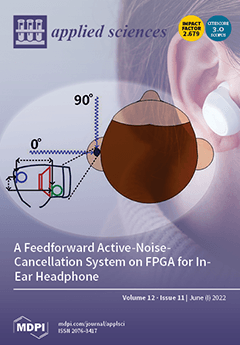In this article, activated carbon was produced from
Lantana camara and olive trees by H
3PO
4 chemical activation. The prepared activated carbons were analyzed by characterizations such as scanning electron microscopy, energy-dispersive X-ray spectroscopy, Brunauer–Emmett–Teller, X-ray diffraction, thermogravimetric analysis, and Fourier
[...] Read more.
In this article, activated carbon was produced from
Lantana camara and olive trees by H
3PO
4 chemical activation. The prepared activated carbons were analyzed by characterizations such as scanning electron microscopy, energy-dispersive X-ray spectroscopy, Brunauer–Emmett–Teller, X-ray diffraction, thermogravimetric analysis, and Fourier transform infrared spectroscopy. H
3PO
4 is used as an activator agent to create an abundant pore structure. According to EDX analysis, the crystalline structure destroys and increases the carbon content of the olive tree and
Lantana camara by 77.51 and 76.16%, respectively. SEM images reveal a porous structure formed as a result of H
3PO
4 activation. The Brunauer–Emmett–Teller (BET) surface area of the olive tree and
Lantana camara activated carbon was 611.21 m
2/g and 167.47 m
2/g, respectively. The TGA analysis of both activated carbons shows their thermal degradation starts at 230 °C but fully degrades at temperatures above 450 °C. To quantify the potential environmental implications related to the production process of the activated carbon (AC) from olive trees, the life cycle assessment (LCA) environmental methodology was employed. For most of the tested indicators, chemical activation using H
3PO
4 showed the greatest ecological impacts: the ozone layer depletion potential (42.27%), the acidification potential (55.31%), human toxicity (57.00%), freshwater aquatic ecotoxicity (85.01%), terrestrial ecotoxicity (86.17%), and eutrophication (92.20%). The global warming potential (5.210 kg CO
2 eq), which was evenly weighted between the phases, was shown to be one of the most significant impacts. The total energy demand of the olive tree’s AC producing process was 70.521 MJ per Kg.
Full article





